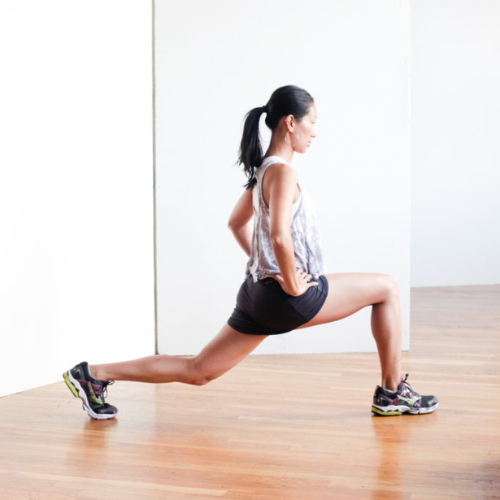Everywhere I look – fitness sites to social media to marketing campaigns – having a booty is ubiquitous and desirable. This was not always the case. A big butt was not something one would aspire for. It was actually quite the opposite. Especially women, they wanted narrow hips and a small butt. Well the trend has taken a turn. The era of skinny is over and a more curvaceous and healthy physique is in.
Several reasons to want and work for a great butt. #1 Serves as an accessory to a pair of jeans #2 Makes women biologically attractive #3 Streamline the body’s silhouette and increase curvature. The list goes on. Obviously these are all aesthetic reasons and legitimate (I should add!) but do we really know what having strong and round glutes does for our bodies biomechanically? Probably not...so let me explain!
– THE ANTIGRAVITY MUSCLE –
The butt (gluteal muscles) is the biggest and most powerful muscle in the body yet it’s often the weakest. This muscle group is made up of 3 muscles: gluteus maximus, gluteus medius, and gluteus minimus. All work together to keep your torso erect and to hold your upper body up when in motion. If not for the glutes, we’d be slumped over and crooked.
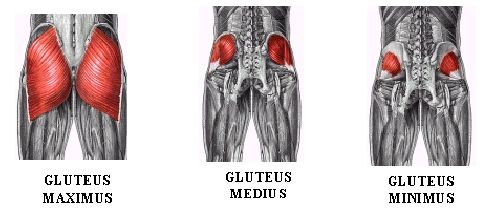
– BETTER POSTURE –
If you’re like 86% of American workers, you are sitting all day long at your job. Add to that the number of hours one sits reading, watching tv, playing games, surfing the net, this can total up to 13 hours a day of flattening your butt in a seat. It’s been labeled the “sitting disease” and can be more harmful to our health than you think. Because of prolonged sitting, the hip flexors become very short and tight making it difficult for one to stand up straight. However if the glutes are strong, they help to lengthen your hip flexors and keep your body in alignment. That in turn helps to relieve the chronic low back pain 80% of the population experiences and prevents you from looking like a hunchback.
– INJURY PREVENTION –
The gluteal muscles are prime mover muscles responsible for extension, abduction, and internal/external rotation. These motions are critical in performing basic exercises such as walking, running, stepping to more dynamic movements like sprinting, jumping, and power lifting. So when the glutes are weak to initiate these movements, other muscles will chip in and take on some of the workload. This is called syngergistic dominance. As this pattern continues, these helper muscles become overactive, overloaded, and susceptible to problems. Muscles do not engage properly, joint motions alter, alignment will change, and injuries occur. The most common muscle groups that suffer from weak glutes are the hamstrings and hip complex – basically all muscles attached to the pelvis and knees. Some common injuries are runner’s knee, IT band syndrome, Achilles tendinitis, and hamstring tears. The stronger the glutes the less the helper muscles will have to work. The right muscles will do their job so the body can move efficiently and safely.
– BIGGER GLUTES = MORE POWER –
For those that are into sport specific training, strength training and body building know how important the glutes are in primary exercises like squats, dead lifts, lunges, jumps, and sprints. Performing these exercises with weak glutes will force your body to compensate (again using those helper muscles) and will cease to gain strength, move faster, and more powerful in these movements. This makes progressive training stagnant and really frustrating especially when a competition or sport is involved.
Now that you know how important it is to strengthen your glutes, let’s get to work. There are dozens of glute focused exercises but here are the most effective (and my fave)!
#1 SINGLE LEG BRIDGE & KICKS

Single Leg Bridges & Kicks
Maintain proper form:
– Keep hip points at the same height through the set
– Drive the heel firmly into the floor to engage glutes and hamstrings and to execute lift of the hips
– Flex the foot when lowering leg down and point the toe when leg lifts up
– For single leg glute lifts, keep knees together by squeezing inner thighs together to stabilize the hip
#2 WEIGHTED BRIDGES
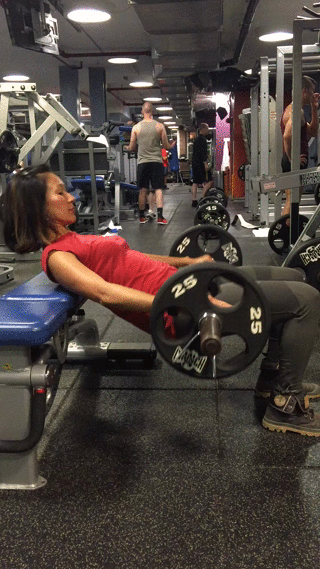
Weighted Bridges
Maintain proper form:
– Align feet directly under the knees
– Drive the heels down to elevate hips and squeeze glutes at the top
– Draw abdominals in to protect lower back
– Lift hips up in a controlled motion engaging glutes, quads, and hamstrings
– Use a balance bad or cushion under bar to protect boney hip points
#3 DEEP SQUATS
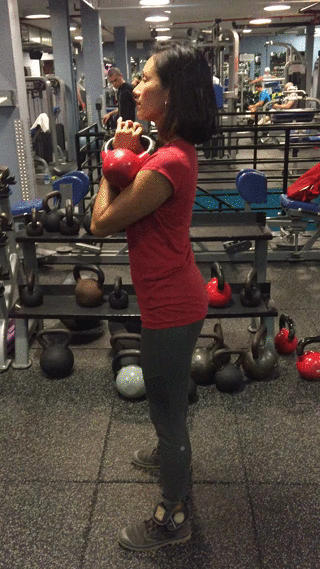
Deep Squats
Maintain proper form:
– Engage the abdominals to straighten spine and keep chest up
– Set feet hip width apart (slightly turn toes out)
– Lower your seat down past the knees
– Avoid knees moving too far forward beyond toes
#4 SPLIT SQUATS
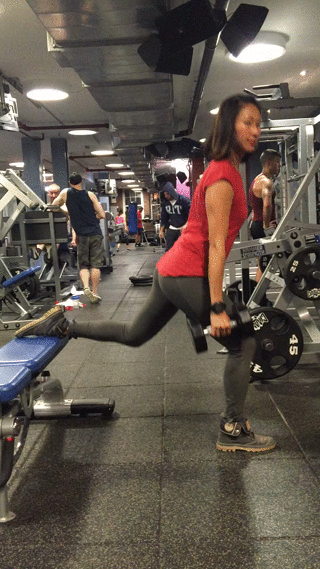
Split Squats
Maintain proper form:
– Relax the foot on the bench and completely disengage the back leg
– Shift upper body weight to the front leg
– Bend knee into right angle making sure knee does not go beyond toes
– Keep abdominals engaged to protect lower back and keep spine straight
#5 SINGLE LEG DEADLIFTS
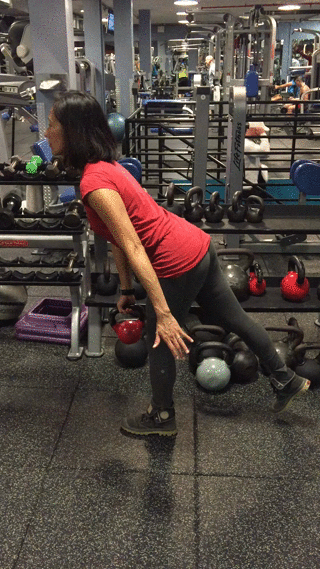
Single Leg Deadlifts
Maintain proper form:
– Slightly bend the standing leg
– Engage abdominals and back muscles to keep upper body in full extension
– Activate and extend back leg so it becomes an extension of your upper body
– Avoid gripping toes for balance
– Squeeze glutes when standing straight up
#6 HIP HITCH
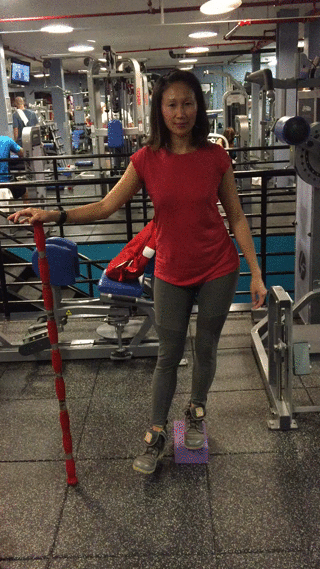
Hip Hitch
Maintain proper form:
– Slightly bend standing leg
– Keep abdominals engaged to keep chest up and spine straight
– Shift the active hip as far to its own side to get a deep stretch followed by strong contraction when hitching hip up
Sure the aesthetic of a great butt may be enough for some to work on these exercises. But don’t sell your booty short. It can be more powerful than you think. Shoot for strong glutes and your body will thank you for it!
